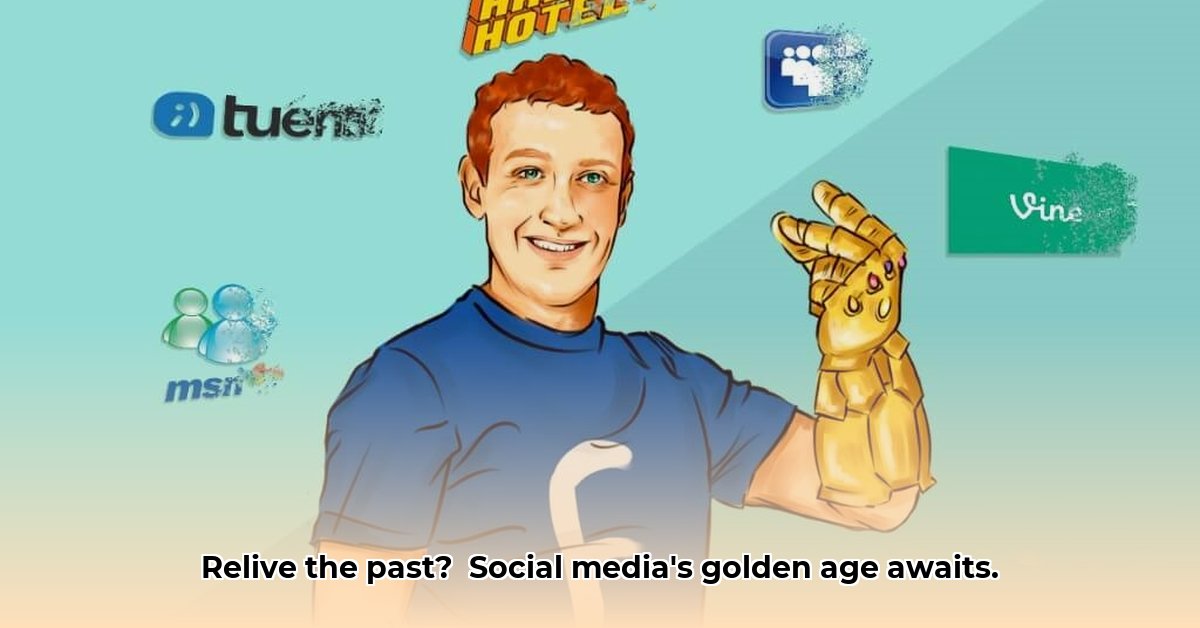
Remember the thrill of customizing your MySpace profile, the endless scrolling through Friendster's friend requests, or the intimate community of LiveJournal? Before the polished algorithms of today's social media giants, a vibrant ecosystem of platforms existed, each with its own unique charm and lasting impact. Fueled by nostalgia and a yearning for simpler times, these platforms are experiencing a resurgence, reminding us of the enduring power of online connection. Let's take a trip down memory lane and revisit these digital relics. For more on this nostalgic trend, check out this article on old social media sites.
MySpace: The Music-Centric Giant
Launched in 2003, MySpace wasn't just a social network; it was a personalized music player. Remember spending hours crafting your profile, adding countless song widgets, and meticulously managing your "Top 8" friends? Its seamless music integration made it the place for discovering new bands and connecting with fellow music lovers. MySpace's decline stemmed from increased competition from Facebook and a failure to adapt to evolving user preferences. While not as dominant as before, MySpace still exists, offering a nostalgic glimpse into the early days of social media—a testament to its enduring appeal for some. The visual aesthetic of customizable profiles and integrated music players continues to resonate with those who remember its heyday.
Friendster: The OG Social Network
Preceding MySpace, Friendster (launched in 2002) was the original pioneer of social networking. Finding friends and receiving those coveted friend requests felt revolutionary! Friendster's downfall? A clunky interface and an inability to handle its explosive popularity. The site’s challenges with scalability led to its eventual decline and eventual inactivity. However, its legacy remains: the very concept of online social networking, a groundbreaking idea that paved the way for the current internet landscape.
LiveJournal: Where Communities Flourished
LiveJournal (1999) carved its niche as a haven for bloggers and writers. Unlike broader platforms, it offered intimacy, allowing users to share personal thoughts with select groups of trusted friends. This fostered incredibly close-knit communities united by shared interests. While not as widely used as in the early 2000's, its dedicated pockets of users value its community focus and the sense of intimacy it provides in the digital world. The ability to create private communities and engage in deep discussions created a unique digital environment.
Tumblr: A Creative Canvas
Launched in 2007, Tumblr became synonymous with creative self-expression. Its microblogging format and reblogging functionality created a dynamic landscape of words, images, GIFs, and videos. Artists, writers, and meme-makers converged, creating a vibrant online habitat. Although it faced challenges with content moderation, Tumblr maintains a dedicated and fiercely creative community. Its unique capacity for creative expression and image sharing continues to attract its dedicated users. The platform's visual focus and ease of sharing creative content made it a hub for diverse artistic expression.
A Quick Comparison: Then and Now
| Platform | Peak Popularity | Defining Features | Current Status | Reasons for Continued Presence |
|---|---|---|---|---|
| MySpace | Mid-2000s | Music integration, customizable profiles | Active | Nostalgia, dedicated music community |
| Friendster | Early 2000s | Pioneering social networking features | Inactive | Overwhelmed by popularity, scalability issues |
| LiveJournal | Late 1990s-2000s | Private blogging, strong community features | Active | Niche communities, intimate online journaling |
| Tumblr | 2010s | Microblogging, reblogging, creative expression | Active | Continued creative expression, niche communities |
The Lasting Impact: More Than Just Nostalgia
These platforms represent significant chapters in social media's evolution, showcasing how online interactions and community building have transformed over time. Their unique features reflected the cultural trends of their eras. While newer platforms dominate, the resurgence of these older sites suggests a desire for alternative online experiences – perhaps a longing for simpler times, less curated content, or stronger community connections. They remind us that the fundamentals of human connection remain timeless. The impact of easy sharing on community building is a key element to consider. The visual aspect, through images and multimedia content, also contributed to the popularity of these platforms.
Understanding the Appeal of Nostalgic Platforms: A Deeper Dive
Did you know that a significant portion of younger users (Gen Z and Millennials) are actively seeking out these older platforms as a form of escapism? (Source: [Insert relevant research here demonstrating user interest]) This trend underscores a broader shift toward authenticity and unique online experiences, hinting at potential future platform designs.